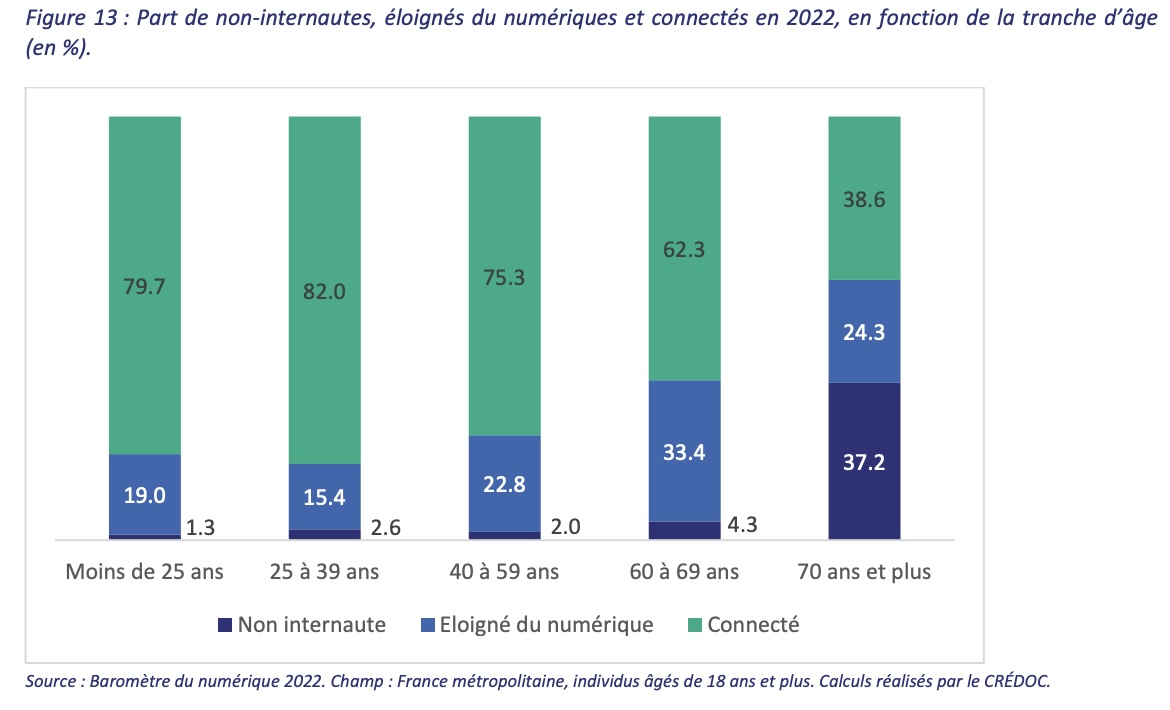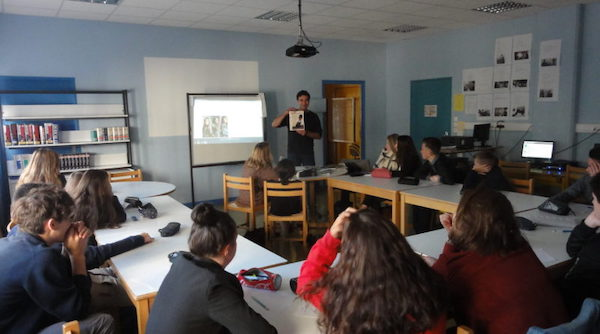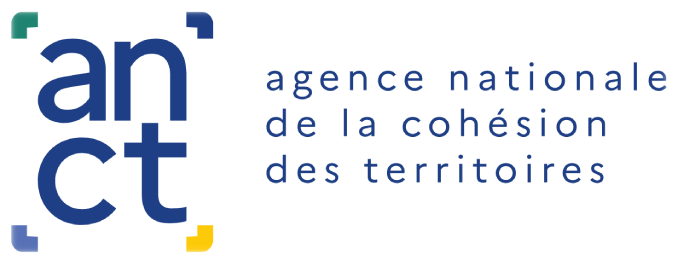Foreword
Young people's perceptions of the digital world are often based on a series of stereotypes: excessive screen time, focus on social network content alone, overexposure to disinformation... A number of surveys, however, counter these stereotypes and reveal, without idealizing them, the wide diversity of digital uses among young people.
- In 2023, CNIL teams carried out a major analysis and survey of the digital practices of teenagers. After reporting on the main findings of social science research on these practices, they conducted a survey on the digital practices of 11- to 14-year-olds.
- In its series of studies entitled "The French digital society", the ANCT takes a look at the persistent myth of "digital natives", which wrongly leads to young people being considered de facto experts in digital technologies. On the contrary, young people's digital practices are differentiated, heterogeneous and, above all, unequal.
- Piloted by the DJEPVA, the annual Youth Barometer has been surveying around 4,000 young people aged 18 to 30 since 2016. Over the years, this Youth Barometer usefully documents the evolution of the various forms of commitment and participation of young people in public life. In 2024, the Barometer found that "young people's commitment is not weakening, but is tending to change".
- A CREDOC survey conducted in 2022 among 1,500 young people aged 14 to 18 shows that despite the omnipresence of screens, writing practices are not disappearing. The survey, commissioned by the association Lecture Jeunesse, explores the different contexts of writing outside school (functional or leisure uses), the writing methods used (handwritten or digital) and the profile of young people who are moving away from this practice.
The title of this dossier is taken from a conference organized in March 2024 as part of Numérique en Commun[s]. ANCT's Digital Society Program joined forces with the newspaper Le Monde to decipher young people's relationship with the digital world. The conference looked at the risks and opportunities that the Internet and digital technology present for young people, while questioning the balance between an overly alarmist or overly confident attitude towards these so-called " digital natives ".
Digital teenagers: what the social sciences have to say
As part of the CNIL's work to help young people protect their privacy, Mehdi Arfaoui, a sociologist at the CNIL's Digital Innovation Laboratory (LINC), and Jenny Elbaz, head of the CNIL's digital education mission, have undertaken to share the findings of research into the social sciences of digital teenagers.
As Mehdi Arfaoui and Jenny Elbaz observe, the first observation in the literature is that digital activities play a key role in the social relationships of teenagers in general. Their daily lives are " made up of injunctions to digital presence and hyperconnectivity prompted by the principle of feedback (like, comment, share, even private message) and by reputation issues ". Digital technology encourages a blurring of the boundaries between "private life" and "public life", due in particular to the social value placed on sharing intimacy and the phenomenon of habituation to self-exposure.
The quest for autonomy in adolescence generates a competitive game between family norms, school norms and peer group norms. " Most digital activity takes place not only out of sight, but also "out of mind" of adults, who have no knowledge of how the platforms mobilized work".
Adolescence is a time for building a relationship with control (parental or academic) and exploring self-control. Adolescents recognize their need for limits, particularly through parental supervision. "However, when these modalities are not negotiated, or when they encroach heavily on their intimacy, they can be questioned and delegitimized by adolescents. The modalities of parental control can thus alternate or complement each other depending on the period, and are regularly renegotiated between parents and children".
Numerous social, gender and class inequalities are expressed at different points in teenagers' digital practices.
Référence :
11-14 years: a step-by-step appropriation of digital technology
To better understand how teenagers view their own practices, the CNIL conducted a qualitative survey of 120 schoolchildren aged 11 to 14.
The acquisition of digital devices (computer, phone, tablet), access to a number of applications and the creation of accounts all take place in stages, often following a non-linear trajectory.
The stage that precedes the acquisition of their own tools is crucial: for the most part, middle-schoolers were introduced to digital technology long before they arrived at school: within the family, through their parents, or through the teenagers and young adults around them. " The first forms of digital appropriation often take place by proxy on the family tablet or directly on a parent's phone, whose use must be negotiated (time spent, installation of an application, etc.). In this case, children first reproduce uses that are authorized and/or valued by the family framework and tools".
Subsequently, the acquisition of their own equipment also takes place in stages. For the majority of students, the acquisition of a smartphone and/or an Internet package takes place when they enter college, or a few months before/after. Some parents try to resist this group effect, either by keeping the touchtone phone against the child's wishes, or by switching to other types of device such as the tablet. The acquisition of one's own equipment and the type of equipment chosen for the child depend on a family organization already in place." In this way, the diversity of acquisition methods highlights the inequalities between households".
11-14 years: multiple injunctions for use
One of the surprises for the authors of the survey of 11-14 year-olds lies in the place occupied in the routines of 11-14 year-olds by the school's digital working environment (ENT). Teenagers often consult the ENT application as soon as they wake up, "to see if a teacher is absent", and before turning off the phone, "to check my timetable".
More generally, when they acquire a phone or tablet, children don't usually make it a priority to join a social network. In fact, 11-14 year-olds, like their parents, are rather wary of digital spaces where they can be put into contact and visibility with strangers. The first uses are much more associated with passions (drawing, sports) and the consumption of cultural and leisure goods (video games, films and music, via Spotify, YouTube or Netflix).
The creation of social network accounts comes later, first to interact with family members and peers. Installing additional applications is generally a gradual process, with schoolchildren only creating an account once the application has proven its worth. What's more, for many of them, the installation of an application is still subject to parental authorization.
A frustrated relationship with support
Adolescence is a time of increasing digital injunctions. The standards to which adolescents are subjected are numerous and sometimes contradictory. The ways in which parents support their children's use of digital technology vary according to the family context (in particular, the parents' willingness and availability).
Whatever the parents' style of support, schoolchildren accept and value parental mediation. " Adolescents' fear is less of being controlled in their digital use than of being prevented or punished without consideration for their real and concrete use (...) Parents' lack of knowledge of or trust in their children can lead to a circumvention of parental rules, likely to make their children's practices even more secretive for parents".
Unequal digital skills and practices
19% of 18-24 year-olds are not digitally literate.
Référence :

This figure, taken from the report La société numérique française : définir et mesurer l'éloignement numérique (French Digital Society: Defining and Measuring Digital Distance), clashes with the idea that there are such things as "digital natives ". The notion of "digital natives " conveys the idea that young people, because they were born with, or even in, digital technology, have a better grasp of digital technologies, their codes and related uses than older generations.
"A large number of studies show that the digital skills and practices of young people are differentiated, heterogeneous and, above all, unequal, insofar as they are dependent on very different social contexts". As a result, many young people, particularly those from low-income backgrounds, encounter difficulties in their use of digital technology, for example, in the context of their academic success or professional integration, for a variety of reasons ranging from the cost of computer equipment to a lack of confidence in their ability to learn and train with online tools.
"Despite using the Internet more intensively than their elders, usage does not guarantee expert use of these technologies," note the report's authors from CREDOC (Centre de Recherche pour l'Étude et l'Observation des Conditions de Vie) and CREAD (Centre de recherche sur l'éducation, les apprentissages et la didactique de l'Université de Rennes 2). Parents' cultural and digital capital plays an important role in the degree to which young people master digital tools. "The more cultural capital parents possess and the more digital skills they have developed themselves, the more they supervise their children's digital practices from an early age. Conversely, the fewer parents - often from low-income backgrounds and with few qualifications - have developed digital skills, the more they rely on schools to teach them the uses and best practices".
" It's no surprise, then, that digital inequalities are very much in evidence in the education sector. ".
As a result, the authors point out that the idea of digital natives is a " myth ". myth " Unfortunately, it still permeates collective imaginations, including those of young people themselves. " Unfortunately, it still permeates collective imaginations, including those of young people themselves: some of them integrate the idea that they are supposed to be digital experts, provoking a feeling of guilt and a lack of knowledge. a feeling of guilt among some of those who feel uncomfortable with digital tools ".
Digital engagement, the number one way young people participate in public life
"Contrary to what is often put forward in the dominant discourse, young people have not given up all involvement in public affairs. Recent surveys have shown that they are even more engaged than the not-so-young, putting certain preconceived ideas into perspective, describing them as massively withdrawn into a frigid individualism and locked into civic apathy", observes political scientist Anne Muxel, CNRS Research Director at Cevipof (Sciences Po), in TheConversation.
Numerous studies have highlighted the singularity of this age group. With regard to voting, surveys on electoral participation show that, overall, young people are more likely to abstain than older people, even if the majority of them vote intermittently rather than systematically. In 2023, the Baromètre de la Jeunesse reported that 18-30 year-olds were more involved in other forms of participation (petitions, taking part in demonstrations, strikes, civil disobedience actions, etc.) than their elders. Signing a petition or defending a cause on the Internet or social networks remained, for example, the most widespread form of civic involvement among 18-30 year-olds (40% versus 32% of those aged 31 and over in 2023).
Two recent surveys document this finding of a commitment by young people that is not weakening, but tending to change": the Baromètre 2024 de la jeunesse (Youth Barometer 2024 ) from the Direction de la jeunesse, de l'éducation populaire et de la vie associative (DJEPVA) and the " Jeune(s) en France" survey for The Conversation France. These two surveys provide a clearer picture of young people's state of mind, their confidence or concern about the future, the causes they defend and the ways in which they get involved.
Read more : Digital engagement, the number one way young people participate in public life
Référence :
Digital technology doesn't turn young people away from writing
Despite the omnipresence of screens, writing practices are not disappearing. This is shown by a CREDOC survey survey conducted in 2022 among 1,500 young people aged 14 to 18. The survey, commissioned by the association Lecture Jeunesse, explores the different contexts of writing outside school (functional or leisure uses), the writing methods used (handwritten or digital) and the profile of young people who are moving away from this practice.
Even though 87% of 12-18 year-olds are equipped with smartphones, writing is still very much a part of life among the 14-18 year-olds surveyed. 92% of 14-18 year-olds write at least "sometimes" in their daily lives, and 60% write regularly, i.e. "every day or almost every day". Within this age group, the frequency of writing varies little according to age.
On a daily basis, this practice is expressed in various forms, whether digital or handwritten: writing text messages, e-mails, shopping lists, memos, jotting down thoughts, writing words to friends...
The written word, whether in paper or digital format, is part of young people's daily lives, as they memorize words or events (23%), put down their thoughts (19% do so "every day or almost every day"), send documents to their employer (17%) or write love notes (16%).
Read more : Digital does not turn young people away from writing
Référence :
The Internet and young people: what are we afraid of?
On March 5, 2024, as part of Numérique en Commun[s], ANCT's Digital Society Program teamed up with Le Monde newspaper for a conference aimed at deciphering young people's relationship with digital technology. The conference looked at the risks and opportunities that the Internet and digital technology present for young people, while questioning the balance between an overly alarmist or overly confident attitude towards these so-called "digital natives".
"The negative impact of the Internet and digital technology on young people is regularly highlighted in public debate. Digital technology is accused of inducing neurodevelopmental disorders, conveying images that are inappropriate for young people and reducing interaction between parents and children, while at the same time limiting other practices that contribute to the development of young people, such as sports, outdoor activities or reading (...). "
Different risks and practices
" We need to distinguish between the different ways in which young people use digital technology and the Internet. (...) All those involved insist on the existence of differentiated practices within families, depending on social background and cultural capital. In this respect, children from well-off backgrounds develop digital practices that can be reinvested in their academic success, unlike children from modest backgrounds (...) ".
The need to deconstruct certain discourses, without minimizing the risks
" The deconstruction of certain preconceived ideas about digital technology and young people should not lead to the trivialization of certain very real risks. (...) In this context, can a balanced view of the digital world and young people be taken in the public arena, in the face of alarmist discourse or maximization of the stakes?
For the speakers, it is imperative to base political discourse and public action on the scientific research available on these issues. Given the complexity of the issues raised by digital technology, they all stressed the need to strengthen links between different scientific disciplines, through interdisciplinary research programs. "
Report on the Le Monde X NEC conference: Internet and young people: what are we afraid of?
Référence :
Sources
1. Digital teenagers and privacy: what the social science literature has to say
3. Digital engagement, the number one way young people participate in public life
4. Digital technology doesn't turn young people away from writing
5. Le Monde X NEC conference: Internet and young people: what are we afraid of?











